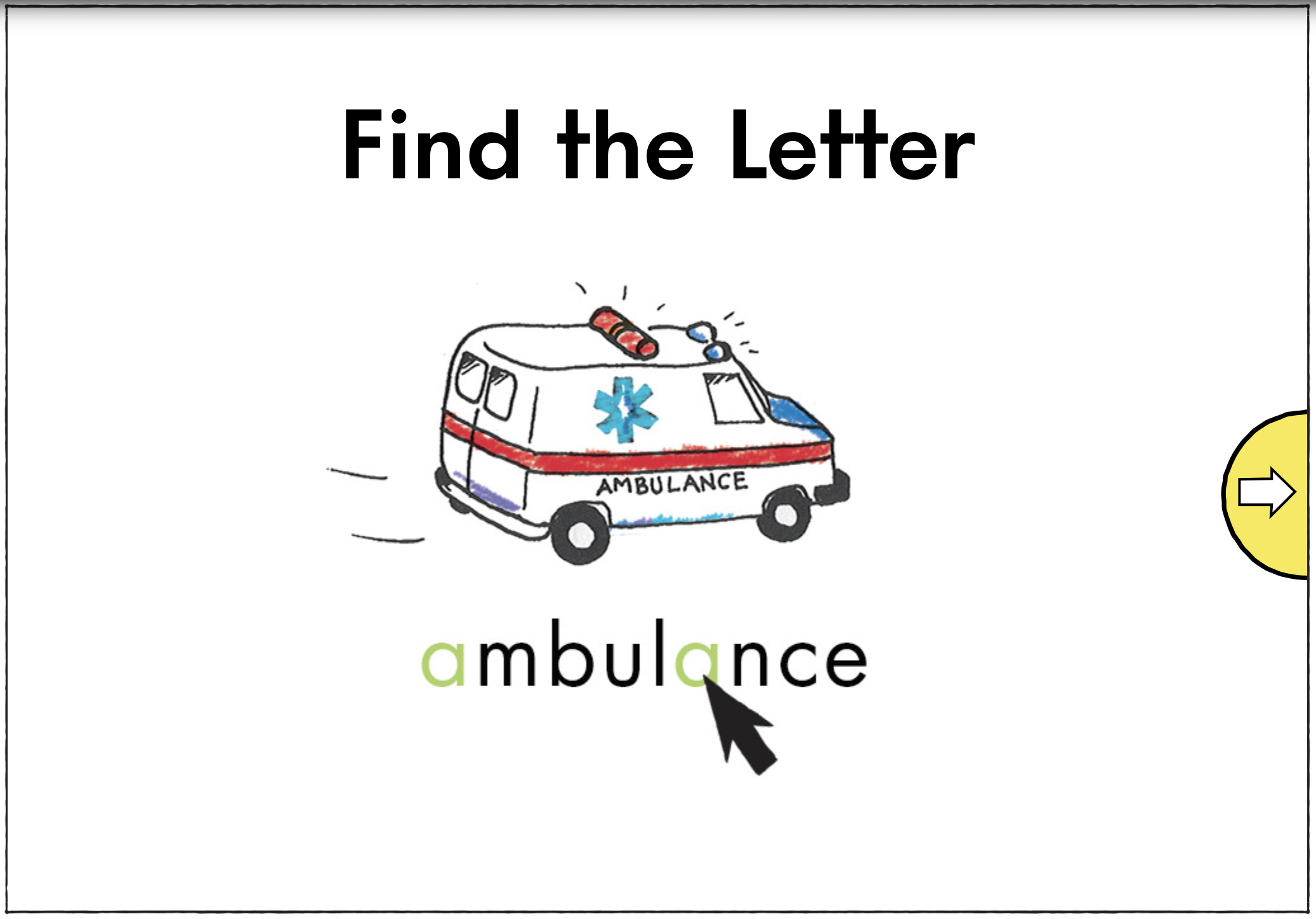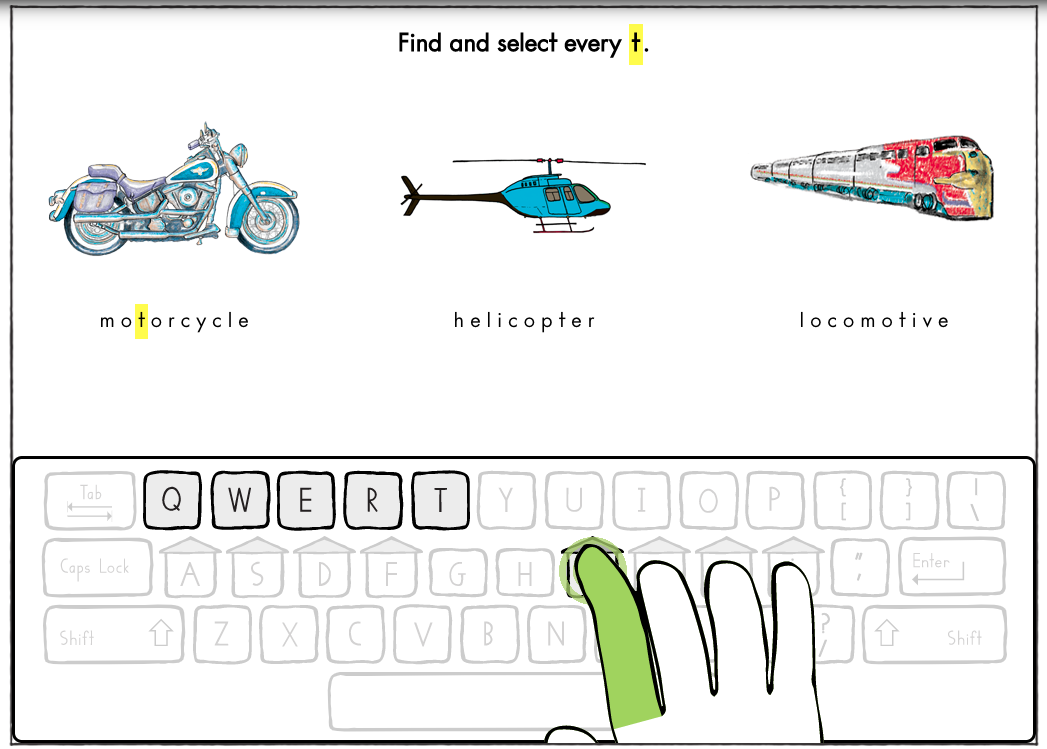Keyboarding skills, formerly known as typing, were previously taught in middle or high school. However, as we have become more reliant on technology in everyday life, it is becoming increasingly more important to learn keyboarding skills earlier for increased speed and efficiency and to minimize the development of poor technique habits.
The first through fourth grade has been identified as the ideal time to teach keyboarding using a touch technique with both hands and all fingers (Poole & Preciado, 2016). Foundational skills for keyboarding are important to lay the groundwork for keyboarding success.

Developmentally appropriate keyboarding skills by grade.
Foundational keyboarding skills
Foundational keyboarding skills include (Cantalupi, 1991; Knox, 2004; Lindroth, 2002; Reilly, 2002; Warwood, et al, 1985):
- Mouse use—important for manipulating computer input devices
- Letter recognition of lowercase and capital partners—important to know the letters seen on the keyboard and be able to match them to text
- Note: Chromebooks have lowercase letters on the keyboard while standard computers and laptops have capital letters
- Familiarization with the keyboard, including home row placement—learning where the letters are placed on the keyboard is an important step in developing motor memory and speed in keyboarding without relying on sight in later grades
Keyboarding Without Tears can help
Keyboarding Without Tears® (KWT) is a unique, research-proven program that employs a patented approach to help all students in grades K–5 build essential keyboarding skills. Our targeted, game-based curriculum fits perfectly into the developmental progression of writing and builds computer readiness, digital citizenship, and digital literacy skills. We actively collaborate with educators to ensure our program can be easily implemented in all classrooms. All you need to begin making progress is 5–10 minutes of practice each day.
The foundational skills addressed in KWT in the early grades include the following:
- Drag and drop—pointing and clicking with the mouse, dragging, and releasing at appropriate time
- Finger fitness—associating finger to key in preparation for bilateral touch typing
- Discovering keys—finding the letters on the keyboard, using the appropriate key, and learning the arrangement of the letters on the keyboard
- Pairing Letters—learning commonly paired letter combinations
- Keywords & Syllable parts—grade-level appropriate vocabulary and syllables are incorporated
- Spacing out —activities to learn about use of the space bar
- Building Words—transition from letter combos to making words using the familiar letter combinations
- Discovering number keys—familiarity with the number row

In addition to the engaging game-based lessons, there are embedded assessments built into the curriculum that check for fluency with keying letters and words in kindergarten. Full sentences are added later, leading to full paragraphs for older students.
Research-proven
Research has shown that children using the KWT program made greater improvements in keyboarding-related skills than children who used alternate methods of keyboarding instruction. These improvements included keyboarding technique (two hands versus hunt-and-peck with a single finger) and keyboarding speed in words-per-minute (Donica, Giroux & Faust, 2018; Donica, Giroux, & Kim, 2019). Teaching foundational skills is important for future keyboarding success.
Free Sample Lessons
Keyboarding Without Tears makes it easy to teach the pre-keyboarding and keyboarding skills students need to succeed with any assignment, in any setting. Click here to access free sample lessons for grades K-5.
References
- Cantalupi, J. D. (1991). Instructional practices and perceptions regarding pre-secondary keyboarding in Pennsylvania public schools. Unpublished thesis. Pennsylvania State University.
- Donica, D. K., Giroux, P. & Faust, A. (2018) Keyboarding instruction: Comparison of techniques for improved keyboarding skills in elementary students. Journal of Occupational Therapy, Schools, & Early Intervention, 11(4), 396-410, DOI: 10.1080/19411243.2018.1512067
- Donica, D. K., Giroux, P., & Kim, Y. (2019). Effectiveness of Two Keyboarding Instructional Approaches on the Keyboarding Speed, Accuracy, and Technique of Elementary Students. The Open Journal of Occupational Therapy, 7(4), 1-15. https://doi.org/10.15453/2168-6408.1599
- Knox, N. S. P. (2004). Comparison analysis of grade level implementation of published keyboarding skills based on international society for technology in education (ISTE) standards and states in the southern association of colleges and schools (SACS). Unpublished doctoral dissertation. University of Tennessee, Knoxville.
- Lindroth, L. (2002). How to...implement keyboarding. Teaching Pre K - 8, 33(2), 16, 20-21.
- Poole, D. M., & Preciado, M. K. (2016). Touch typing instruction: Elementary teachers’ beliefs and practices. Computers and Education, 102, 1-14. https://doi.org/10.1016/j.compedu.2016.06.008
- Reilly, R. (2002). Keyboarding--it’s not glitzy, but it’s sure important. MultiMedia Schools, 9(5), 36-41.
- Warwood, B. and others (1985). A research study to determine the effects of early keyboard use upon student development in occupational keyboarding. Final report of research.

